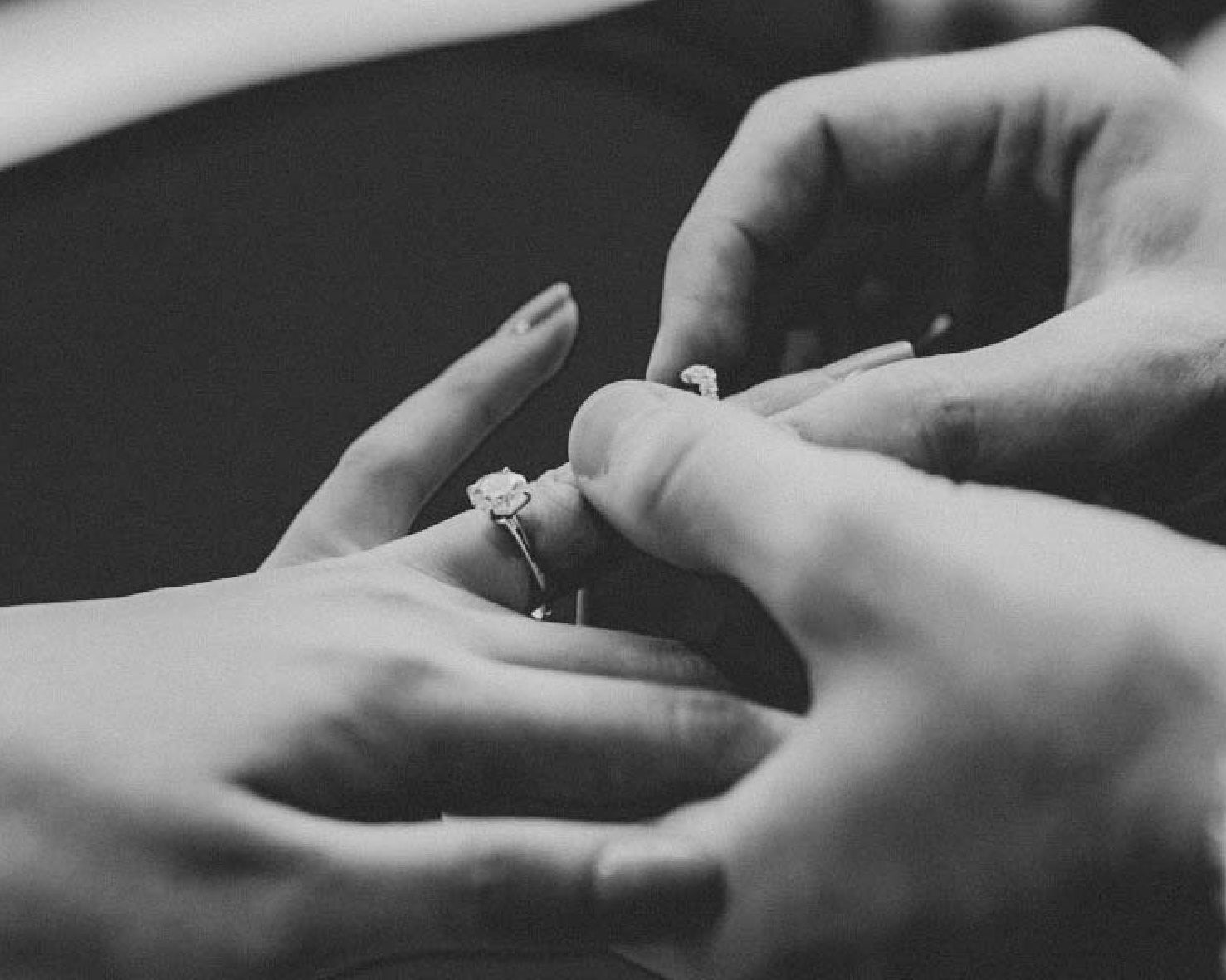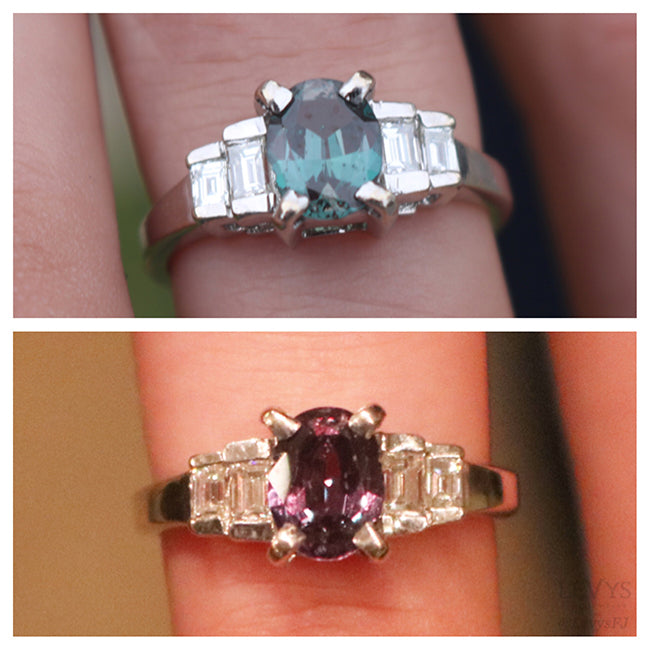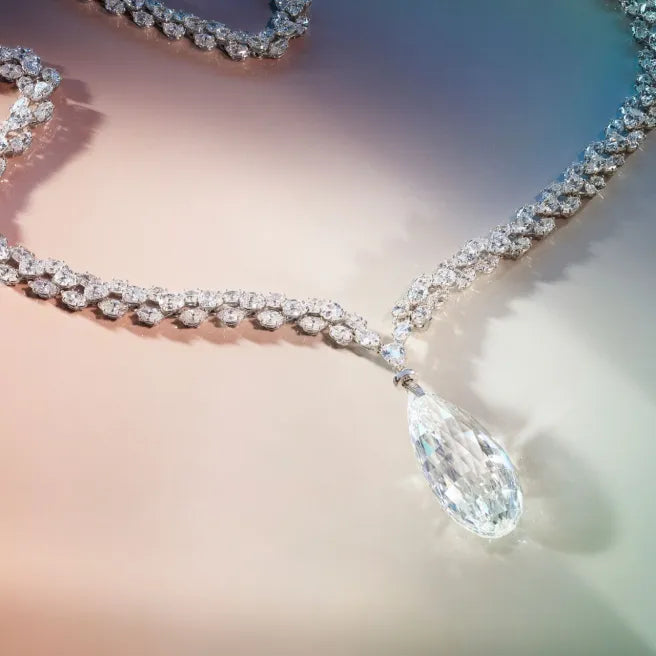
 Filigree in ancient times - This carved quartz cross pendant dates back to ancient Rome (400-500 CE apx) and features Etruscan style filigree wire decorating the gold.
Filigree in ancient times - This carved quartz cross pendant dates back to ancient Rome (400-500 CE apx) and features Etruscan style filigree wire decorating the gold.
Ask someone to visualize a piece of antique jewelry, and there is a good chance that the piece will include an ornate design within the metal. Whether swirls or sharp lines, the artistry combined with the openness in the metal adds the type of elegance that can only come from the smallest of details. If the metal design features open spaces or a lace-like pattern, often made of wire, it is considered “filigree”. If the metal decoration does not completely pierce the design, it is considered “engraving”.
Lacy filigree-style designs have been popular additions to jewelry for centuries; the style dates as far back as 3000 BCE, specifically to the modern-day city of Midyan in Mardin Province, Turkey. However, the rise of the art nouveau style (also known as the ‘modern’ or ‘Glasgow’ style in the United Kingdom), along with changes in metal-working capabilities, initiated an increased use of filigree at the turn of the twentieth century CE. The design form has undergone several cycles of popularity, and has emerged once again as a popular trend among jewelry lovers seeking a look that stands out from the crowd.
The Functionality of Filigree
Filigree in a piece of jewelry inherently creates a look of elegance and shows that the wearer appreciates artistry and craftsmanship. In addition to simply being pleasing to the observant eye, it also serves a much more functional role: providing a large look while using less material. The use of filigree would allow jewelers to make large pieces more affordable or more profitable because the open spaces meant that more of the wearer's body could be decorated while using a smaller amount of metal.
The money saving side rings even more true today. When someone is buying an elaborate piece of jewelry with a filigree design, the original artist does not need to be paid for their work, as they were already paid 100 or so years ago. Therefore, the vast majority of the cost is focused on the materials. The more delicate the filigree, the less it weighs, and therefore, the less it will usually cost.
Introducing Platinum – Filigree Becomes More Delicate
One of the most important innovations in the history of jewelry making occurred at the very beginning of the 20h century. In 1903, French engineers Edmond Fouché and Charles Picard developed the concept of oxygen-acetylene welding. This allowed heat to reach higher temperatures for the purpose of metal cutting, but it also served a unique role within the jewelry industry: mixing oxygen with acetylene as fuel allowed the average jeweler to heat platinum to a point where the metal could be easily shaped. For the first time in recorded history, jewelers had access to a delicate, white metal that was durable enough to adorn the body and securely hold gemstones.
 A late Georgian/early Victorian sterling silver filigree and diamond necklace. The bulky materials make it impossible to create the intricate designs that would become popular in the Edwardian and Art Deco periods.
A late Georgian/early Victorian sterling silver filigree and diamond necklace. The bulky materials make it impossible to create the intricate designs that would become popular in the Edwardian and Art Deco periods.
What about silver? When jewelers in Victorian times (and earlier) wanted to create a piece of jewelry using a white metal, they would use silver. While silver is a beautiful metal, it is fairly soft and requires a significant amount of metal to ensure durability. This meant silver jewelry designs inherently have to be chunky. Additionally, silver tarnishes when it interacts with oxygen, requiring it to be cleaned regularly. Platinum was able to serve the same purpose using significantly less metal, and never tarnishing. Another major advantage of using platinum is that it is hypoallergenic, but they probably didn't know that yet.
Sidenote: the ancient Egyptians were the first to use platinum in jewelry and pre-Columbian indigenous South American natives also learned how to shape it long before Europeans. After being “discovered” by Spanish soldiers in the 16th century, platinum was not successfully melted until 2 centuries later, in 1751. Details like this truly make one look back and appreciate the lost knowledge and skillsets of ancient peoples we so frequently look back on today as “primitive”.
Regardless of who did it first, by the early 1900s, platinum was the hottest trend in jewelry (pun intended), and jewelers started getting creative with the new material.
Edwardian Elegance
Countering the artful elegance of Art Nouveau, the jewelry of the Edwardian period remained ornate while focusing on materials viewed as more “traditionally valuable”. This meant using gems such as diamonds, ruby, sapphire, etc, as opposed to the less traditional materials favored by the Art Nouveau artists: opal, mother of pearl, malachite, lapis lazuli, etc. While the use of relatively inexpensive, artful materials didn’t stay on trend, the elegance of the Art Nouveau swirls certainly did. This transition in jewelry making directly led to the heavily filigreed “Garland Style” so commonly associated with Edwardian jewelry today.
The Edwardian period (1901-1910) may have influenced a return to a more traditional design style, but the use of platinum simultaneously encouraged jewelers to create more elaborate and delicate pieces.

A delicate, yet bold garland style platinum and diamond necklace - circa 1900-1915.
Art Deco Filigree: Sharpness and Symmetry
Another major innovation for the jewelry industry occurred in Germany, when white gold was first introduced in 1912. Despite the significance of this development, the use of white gold did not immediately catch on within the trade. This is most likely because the Germans and most western countries were on not the best terms during the few years that followed. By the 1920s, the world war was over and everyone was friends again. This allowed the unique new material to explode in popularity amongst jewelers as an easier to work with and less expensive alternative to platinum.
Following WWI, people in the US, particularly women, were ready for a significant change in most aspects of life. While the men were off in Europe fighting, American women took responsibility to keep factories running during the war. Just a few years later, women in the US would receive the right to vote in August 1920.
This trend in women's empowerment was definitely not limited to the United States. In the United Kingdom, women over 30 gained the right to vote in 1918, and by 1928 all women were allowed to vote. This new sense of empowerment was reflected in almost every aspect of society, from art to architecture to fashion in the Art Deco movement (1920s-30s).
Because women of the Art Deco period were doing more laborious and adventurous activities compared to their Edwardian counterparts, jewelry became lower set and easier to wear. The trend of elegant, elaborate filigree was also left behind in favor of innovative (but equally elaborate) designs. These pieces incorporated sharp edges, bold geometry and symmetry. This edgy, futuristic look can be seen throughout Art Deco art, fashion, architecture, and of course, jewelry.
Another Post-War Society Shift
As so often happens with large scale warfare and the lifestyle changes that must be made to accommodate it, WWII changed the way people in western countries prioritized most aspects of society. During the war, luxury goods were generally viewed as unpatriotic and unnecessary, but by the end, the people with the means to splurge were ready to do so. Just as the end of WWI a few decades earlier had prompted great change, attitudes at the end of WWII directly led to a change in tastes for all forms of art and expression, jewelry included.

An Art Deco necklace made in 14k white gold with European cut diamonds and baguette cut sapphires - circa 1920s
Aside from war, there were other direct reasons for the shift in style trends. Precious metals had been restricted during the war and were now available. Large lab created gemstones (including Linde star sapphires, which were first produced in 1947) were so much more widely available and viewed as scientific marvel. Natural gemstone supplies from the mines discovered in the preceding decades were also finally providing enough larger-sized gemstones to fulfill societies urges.
For all of these reasons and more, the post-war mid-century style was big and bold. Jewelry wearers traded intricate symmetry for big stones, pearls, asymmetry and a futuristic look. Who needs filigree when you have a 40 carat amethyst?
The End?
The Mid-Century and Modernist periods that followed focused on new design styles that tended to stray away from the elaborate elegance their parents and grandparents had enjoyed. While the Modernists incorporated a great deal of Art Deco inspiration, the delicate filigree did not necessarily make a comeback.
Modern jewelry does still frequently include filigree, but it is generally a more subtle accent and less ornate. Unlike with past generations, the intricacy will almost never be the main focal point of the design.
Society’s appetite for art and style continues to evolve. With mainstream use of the internet providing access to a plethora of design options simultaneously, society has significantly limited the importance of "trends" in favor of individualism. Today, there are no fashion taboos. Anything that makes you happy is in style.
The desire for a more distinctive personal appearance means that filigree designs are once again rising in popularity with those who appreciate the intricateness of art from another time. Whether someone prefers the traditional Victorian designs, elegant Edwardian/Art Nouveau swirls or bold Art Deco lines, the appreciation of the fine details is what makes a piece truly “yours”.
This article was originally featured in the Autumn 2024 issue of Gems & Jewellery, a digital magazine by The Gemological Institute of Great Britain (Gem-A).
Ecm61a2cjt000001s6edae5xqhE
- Read More
- Joseph Denaburg
- /
- 0 Comment(s)

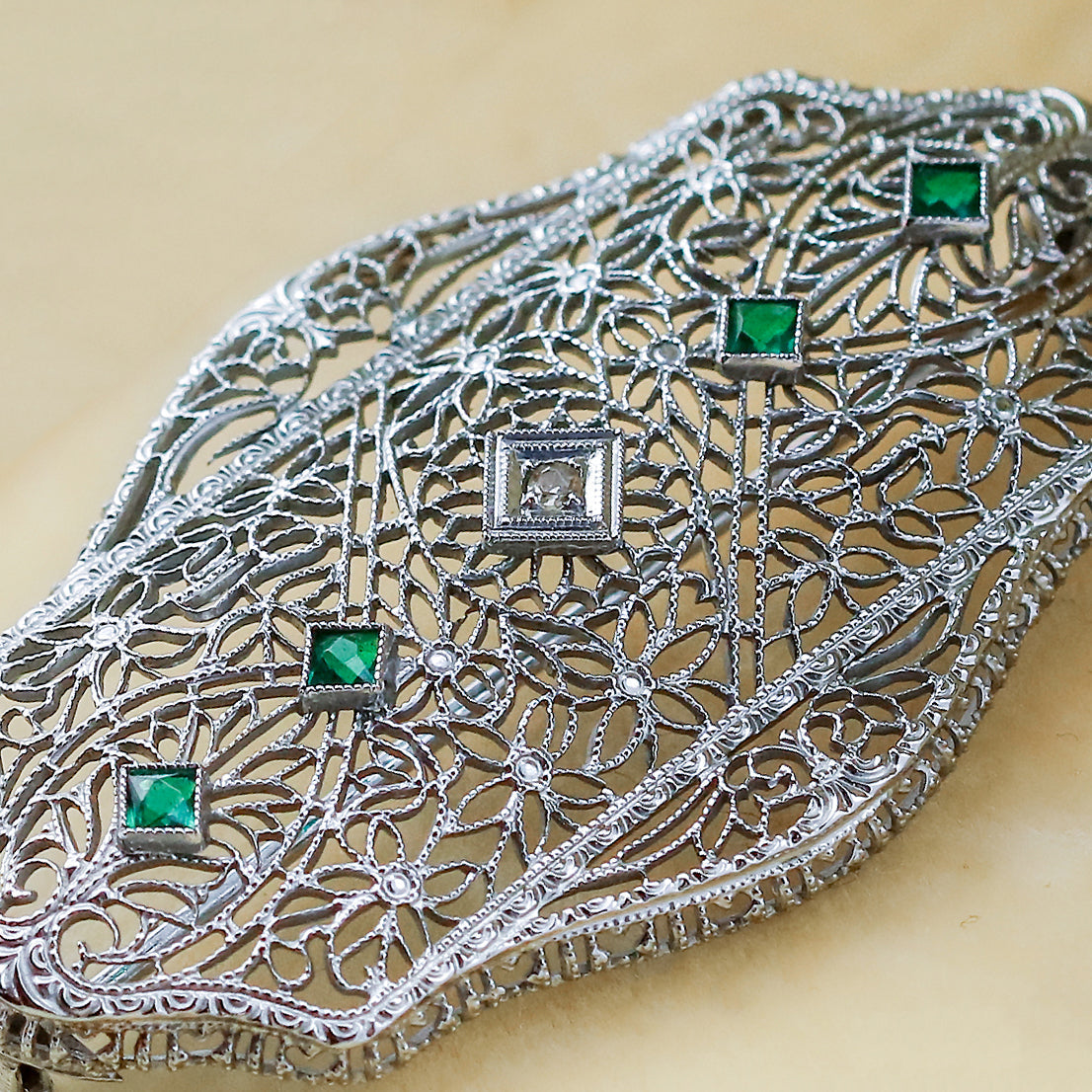
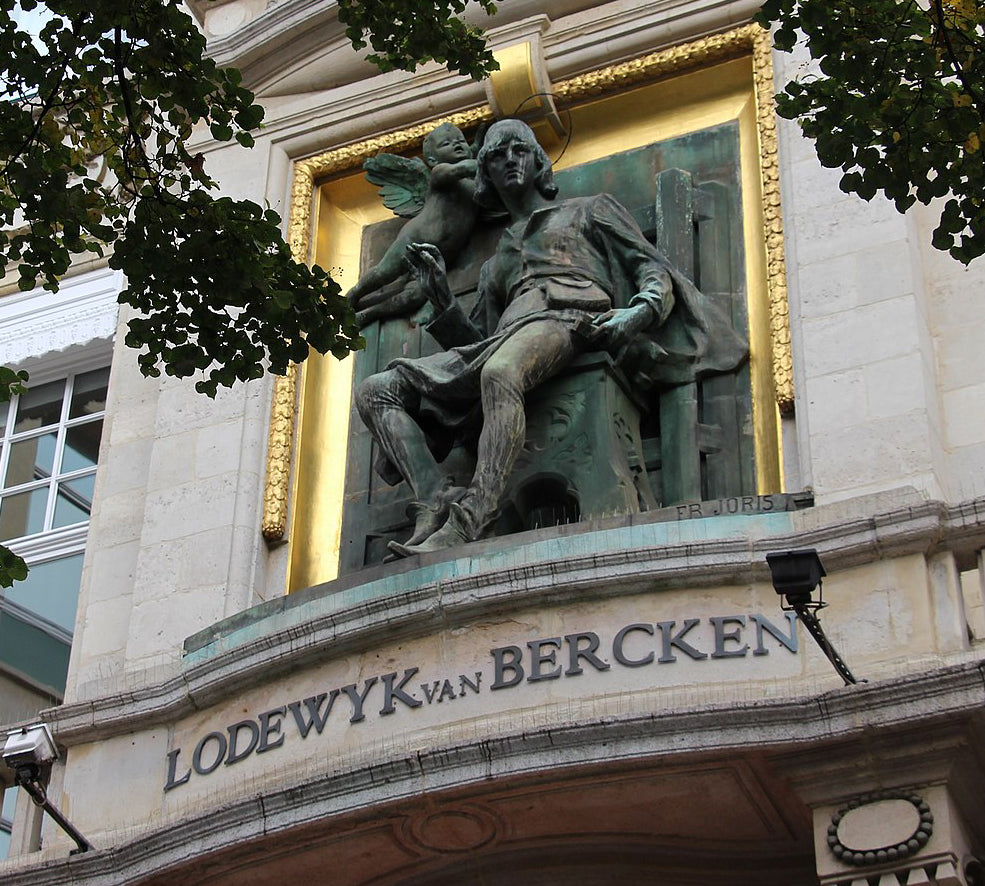
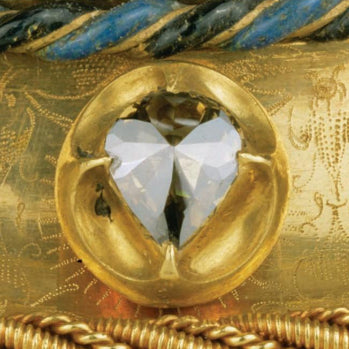 Faceted Pear Shape Diamond Set in the Burgundian Court Goblet - Circa 1453-1467 - Kunsthistorisches Museum - Credit - KHM-Museumsverband
Faceted Pear Shape Diamond Set in the Burgundian Court Goblet - Circa 1453-1467 - Kunsthistorisches Museum - Credit - KHM-Museumsverband